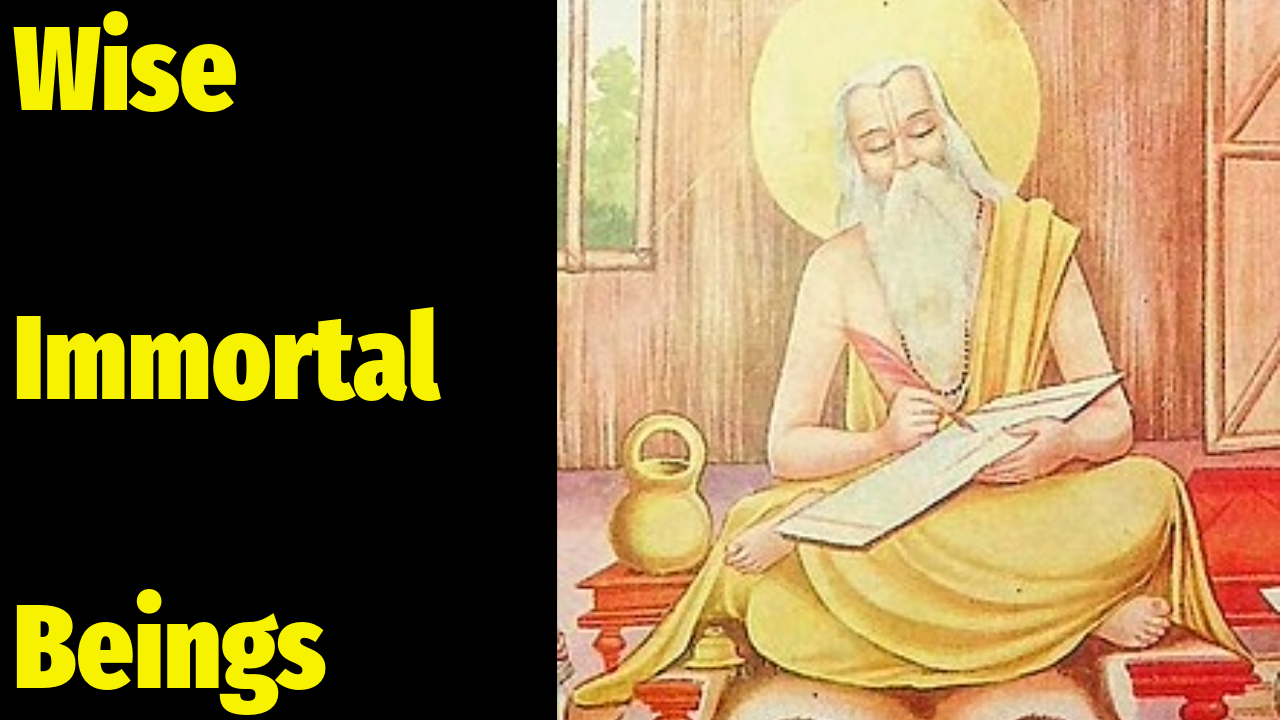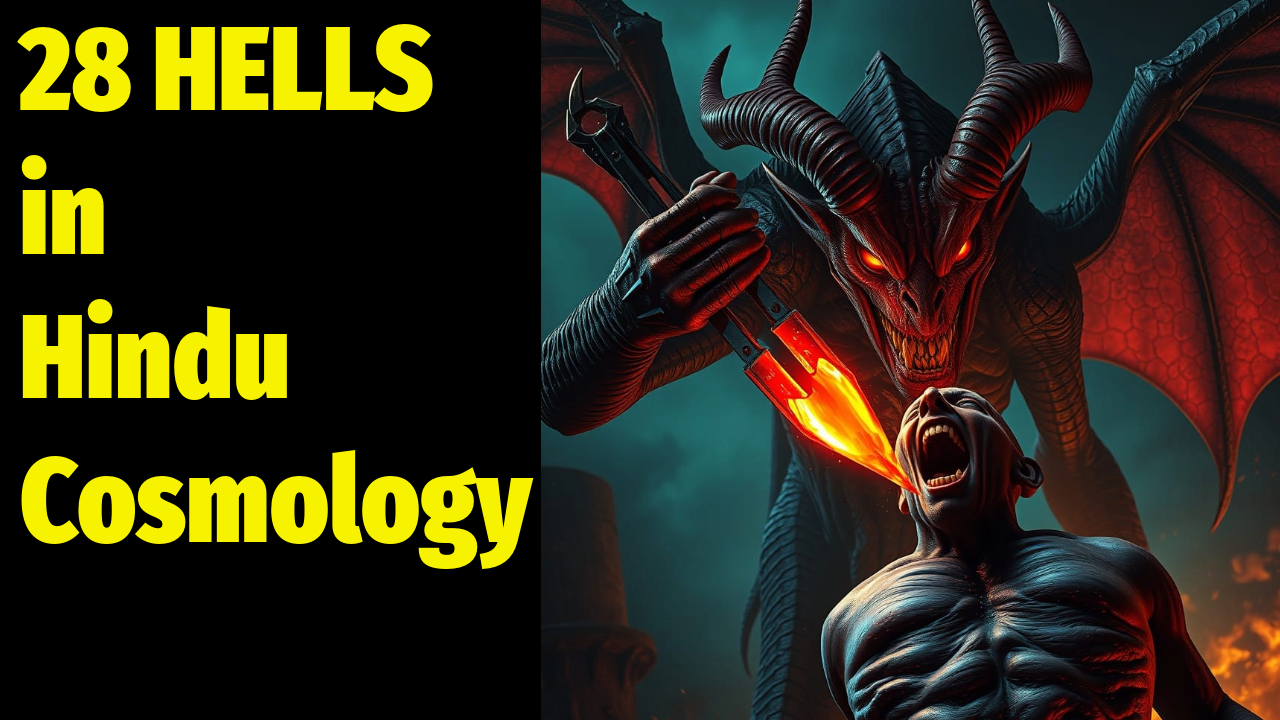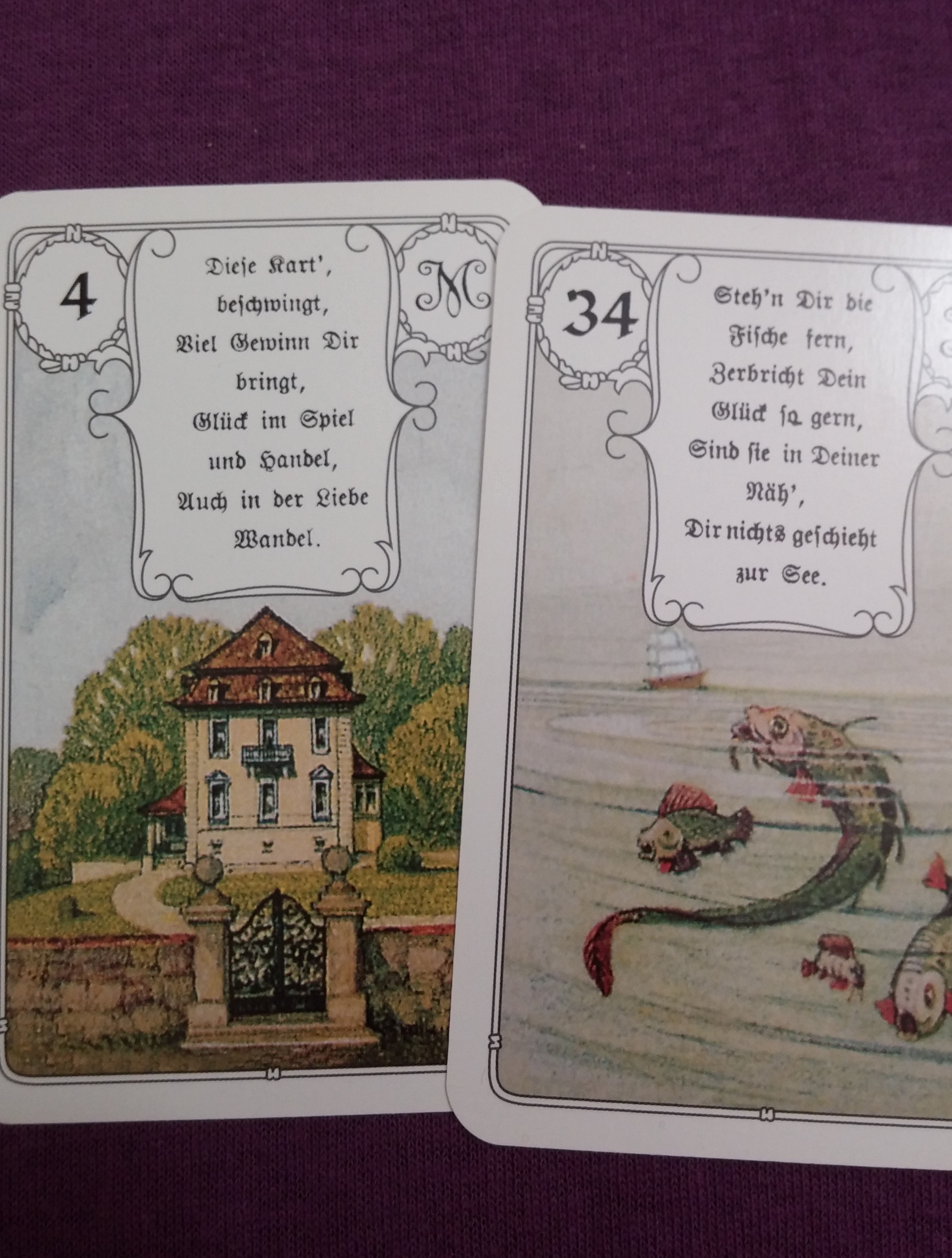
The Chiranjivi are a group of immortals who are believed to remain alive on Earth until the end of the current age known as the Kali Yuga, according to Hindu literature.
The term is a combination of chiram, ‘permanent’, and jīvi, ‘lived’. It is similar to amaratva, which refers to true immortality.
According to legend, at the end of the last Manvantara (age of Manu), an asura named Hayagriva attempted to become immortal by swallowing the sacred pages of the Vedas, as they escaped from the mouth of Brahma. The scripture was retrieved by the first avatar of Vishnu (Matsya).
In one sense, immortal can mean “to live eternally until the destruction of all universes”, as all physical bodies are foretold to become immaterial at the end of time, along with Brahma himself, with the destruction of the universe.
The Puranas, the Ramayana, and the Mahabharata generally describe seven immortal personalities in the Hindu pantheon.
Some scholars consider them to be eight. Each Chiranjivi represents a different attribute of man, which as long as they live, will exist among humanity.
The name Aśvatthāmā is derived from the Sanskrit components aśva (horse) and sthāman (strength or presence), often interpreted as “the one who has the strength or voice of a horse” or “one who is steadfast as a horse”.
Ashvatthama is a character in the ancient Hindu epic Mahabharata. He is the son of Drona, the royal preceptor to the Kuru princes—the Pandavas and the Kauravas.
Drona performed many years of severe penance to please Shiva, to obtain a son who possessed the same valour as the deity.
Favoured by his father, Ashvatthama is entrusted with the knowledge of several celestial weapons. He is regarded to be an avatar of one of the eleven Rudras.
He is characterized as a valorous and impetuous young warrior, embodying the radiance and ascetic dignity associated with Brahmanical ideals.
Born a Brahmin, he voices a sense of misfortune at having been compelled to adopt the vocation of a Kshatriya.
During the Kurukshetra War between the Pandavas and the Kauravas, he fights on the side of the Kauravas and emerges as one of the three surviving warriors from their faction, by the war’s conclusion.
As punishment for his actions, Krishna curses Ashvatthama to wander the earth for three thousand years, afflicted by isolation, suffering and decay. He retreated to forests afterwards.
The King of the Asuras, he was regarded to be a benevolent ruler. He overran the three worlds and overthrew Indra.
He ruled without discrimination, and his people were honest, healthy, and happy under his rule.
Mahabali also temporarily possessed the amrita (nectar of eternal life) obtained by the asuras. The amrita allowed his subjects to bring him back to life after his death in one of the wars between suras (devas) and asuras.
Mahabali was thus immune from death. After many wars, the invincible Bali had conquered heaven and earth.
In Kerala, Mahabali is considered to be the noblest and most prosperous ruler, who transformed his kingdom into a heavenly place.
He was exiled to the realm of Patala (the netherworld) by the avatar of Vishnu to restore cosmic order, and was blessed with immortality by the deity.
It is believed that Mahabali will become the King of Svarga (heaven) in the next yuga.
Vyasa
Vyasa means “compiler” or “arranger” and also “separation” or “division.” Other meanings include “split,” “differentiate,” or “describe.”
It is also a title, given to “a holy sage or a pious learned man,” and is applied to “persons distinguished for their writings.”
He is a rishi (sage) with a prominent role in most Hindu traditions. He is traditionally regarded as the author of the epic Mahābhārata, where he also plays a prominent role.
He is also regarded to be the compiler of the mantras of the Vedas into four texts, as well as the author of the eighteen Purāṇas and the Brahma Sutras.
Vyasa is regarded by many Hindus as an Avatar of Vishnu. It’s believed that he is still alive in the current age known as the Kali Yuga.
Hanuman
A great devotee of Rama and a brahmachari, he stands for selflessness, courage, devotion, intelligence, strength, and righteous conduct.
He epitomizes the fusion of “heroic initiative and assertive excellence” with “loving, emotional devotion” to his lord Rama, embodying both Shakti and Bhakti.
He is occasionally depicted as the patron deity of martial arts, meditation, and scholarly pursuits. He is revered as an example of self-control, faith, and commitment to a cause, transcending his outward appearance.
Traditionally, Hanuman is celebrated as a lifelong celibate, embodying the virtues of chastity. Hanuman’s abilities are partly attributed to his lineage from Vayu, symbolizing a connection with both the physical and the cosmic elements.
The Hanuman Chalisa is a devotional hymn in praise of him.
It is said that whoever chants it with full devotion, will have Hanuman’s grace. It’s a very popular belief that chanting the Chalisa invokes Hanuman’s divine intervention in grave problems.
Vibhishana
Even though he was born as a malevolent being, he was pious and considered himself a Brahmin, since his father was a sage.
Vibhishana defected to Rama’s side before the Lanka War owing to his devotion to dharma. He was later crowned the King of Lanka.
After performing a penance to invoke a boon from Brahma, he asked the deity to always set his mind on the path to righteousness, and nothing more. Pleased by this, Brahma gave him the boon of immortality.
The Sanskrit word Kripa means ‘pity’ or ‘mercy’.
According to the Mahabharata, he and his sister were named “Kripa” and “Kripi” as they were adopted by King Shantanu out of pity. Kripa was given the title “acharya” (‘master’) as he was an expert archer.
He was the royal guru of the princes in the Mahabharata.
Along with his nephew Ashwatthama, he was among the lone survivors of the Kaurava warriors who fought in the Kurukshetra War.
According to some texts, he will also become one of the Saptarishi—the seven revered sages—in the next Manvantara, which is a cyclic period of time in Hindu cosmology.
According to some scriptures, Kripa was blessed with immortality because of his discipline, loyalty and impartial nature.
The sixth avatar of Vishnu. He is knowledgeable in all astras (divine weapons) and shastras (treatises). The Kalki Purana states that he will reemerge at the end of the Kali Yuga to be the guru of Vishnu’s tenth and last incarnation, Kalki.
He will instruct the final avatar to undertake penance to receive celestial weaponry, required to save mankind during the end times.
Hindu tradition holds him to be the destroyer of evil on Earth. According to legends, Shiva advised him to go and liberate Mother Earth from felons, ill-behaved men, extremists, demons and those blind with pride.
Parashurama is said to carry various traits including courage, aggression, and warfare along with serenity, patience and prudence. He was known to show his benevolence to Brahmins, children, women, old men and other weaker sections of society.
Sometimes included in the list are also Markandeya, Kakabhushundi, Jambavan, Agastya and Narada.
The Chiranjivi Shloka is a hymn that names the Chiranjivi and states the effects of their meditation.
The mantra also states that the remembrance of the 7 immortals offers one freedom from ailments and longevity.
What do you think of the Chiranjivi? What are your thoughts on Immortality and the Human Quest for Eternal Life? Let us know in the comment section, subscribe and share the post!!!
Check our website for consultations, Tarot readings, exclusive videos, courses, Occult related items and more!!!
Video version with images here:
The 7 Chiranjivi – Immortals in Hindu History and Mythology
Interesting sources, additional info, courses, images, credits, attributions and other points of views here:
Balancing and Healing the Chakras through Yoga https://www.udemy.com/course/balancing-and-healing-the-chakras-through-yoga/?referralCode=12C81A148616B419AA06
Mudras to Balance and Harmonize your Chakras and Energy Body https://www.udemy.com/course/mudras-to-balance-and-harmonize-your-energy-body/?referralCode=1A275C6E67E05E8C8130
Elemental Energy for Success and Well Being https://www.udemy.com/course/elemental-energy-for-success-and-well-being/?referralCode=A680413E03BEAD96E744
Book a Tarot reading here: https://www.suryaholistictarot.com/book-a-reading/
Check our soundtracks here:
https://lennyblandino.bandcamp.com/track/fire-meditation-1
Websites:
https://www.staciebronson.com/
Links and References:
https://en.wikipedia.org/wiki/Chiranjivi
https://en.wikipedia.org/wiki/Ashwatthama
https://en.wikipedia.org/wiki/Mahabali
https://en.wikipedia.org/wiki/Vyasa
https://en.wikipedia.org/wiki/Hanuman
https://en.wikipedia.org/wiki/Vibhishana
https://en.wikipedia.org/wiki/Kripa
https://en.wikipedia.org/wiki/Parashurama
https://en.wikipedia.org/wiki/Brahma
https://en.wikipedia.org/wiki/Pralaya
Pics:
https://en.wikipedia.org/wiki/Chiranjivi#/media/File:A_Hanuman_sculpture_in_Singapore.jpg
https://en.wikipedia.org/wiki/Mahabali#/media/File:Vamana_Bali_Shukra.jpg
https://en.wikipedia.org/wiki/Mahabali#/media/File:Vaman.jpg
https://en.wikipedia.org/wiki/Vyasa#/media/File:Vyasa_Reviewing_Mahabharata_(crop).jpg
https://en.wikipedia.org/wiki/Vyasa#/media/File:Narada_meetsVyasa.jpg
https://en.wikipedia.org/wiki/Vyasa#/media/File:Vyasa_conversation_with_worm.jpg
https://en.wikipedia.org/wiki/Hanuman#/media/File:StandingHanumanCholaDynasty11thCentury.jpg
https://en.wikipedia.org/wiki/Hanuman#/media/File:Hanuman_Mistakes_the_Sun_for_a_Fruit.jpg
https://en.wikipedia.org/wiki/Vibhishana#/media/File:Vibhishan_become_King_of_Lanka.jpg
https://en.wikipedia.org/wiki/Vibhishana#/media/File:Lankatillaka_Temple,_Vibhishana_0547.jpg
https://en.wikipedia.org/wiki/Vibhishana#/media/File:Vibhishana_showing_Vimana_to_Rama.jpg
https://en.wikipedia.org/wiki/Kripa#/media/File:Kripa_(crop).jpg
https://svastika.in/blogs/blog/the-7-chiranjeevis-of-india
https://blog.occultscience.in/how-many-chiranjeevis-in-hindu-mythology
https://en.wikipedia.org/wiki/Parashurama#/media/File:Parashurama_with_axe.jpg
https://en.wikipedia.org/wiki/Parashurama#/media/File:Parshuramsaraswats.jpg
https://en.wikipedia.org/wiki/Hayagriva#/media/File:Hayagreeva.jpg
https://en.wikipedia.org/wiki/Brahma#/media/File:Brahma_on_hamsa.jpg
https://en.wikipedia.org/wiki/Immortality#/media/File:Reincarnation_AS.jpg

